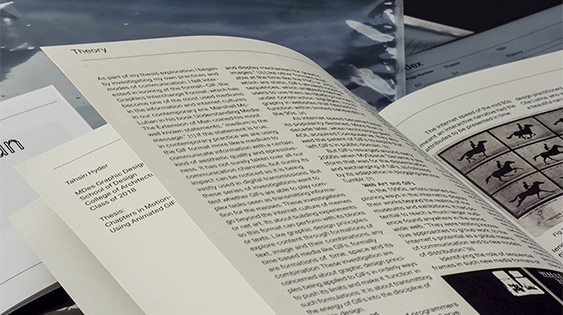Chapters in Motion
I started my thesis exploration by examining my own practices and modes of communication. I was interested in looking at the GIF format, something that has become part of the information and internet culture in the contemporary era. Marshall McLuhan once famously said, “the medium is the message.” Many years earlier German philosopher Ludwig Wittgenstein said, “The limits of my language mean the limits of my world.” I felt it was necessary for one to look at the visual language that the masses are engaged in today. And while this digital internet language was part of my fascination, I believed the qualities of GIFs were not only dynamic, meditative, and exciting in nature, but that the GIF’s aesthetics, if used in orderly ways, could be the source of a much broader graphic design experiment.
One can imagine that GIFs, looped or unlooped, symmetric or asymmetric, often meditative, silent but yet engaging, could belong to a collection. But can one push this format to take the shape of a media that can contain as much information as a page of a book? This broader question is answered through formal experiments where something meant to be static is challenged to be functional yet discursive in dynamic layers of instability.
The final project is a combination of four time-based media pieces, essays that are formatted as GIFs—we could call them animated chapters. Within each of these pieces, one may find similarities with design decisions taken through assigning grid structures, hierarchy and scale, explored through the presentation of content found in typographic books and essays. The spread of a book is contemplated as the space as for such examination.
Through this format, the reader is given opportunities for discovery while each book’s content is narrated across time and space. The reader of these books thus becomes a spectator, choosing whether to find interest in the content or not. If variables such as interest and understanding are established, the goal of this transmission is fulfilled.
By constructing an experimental study of this dynamic medium—drawing from principles related to moving images, time-based media, and motion studies alongside those of graphic design—I hope to push the concept of animated GIFs to its limit, developing new ways to present information from traditional printed texts.



